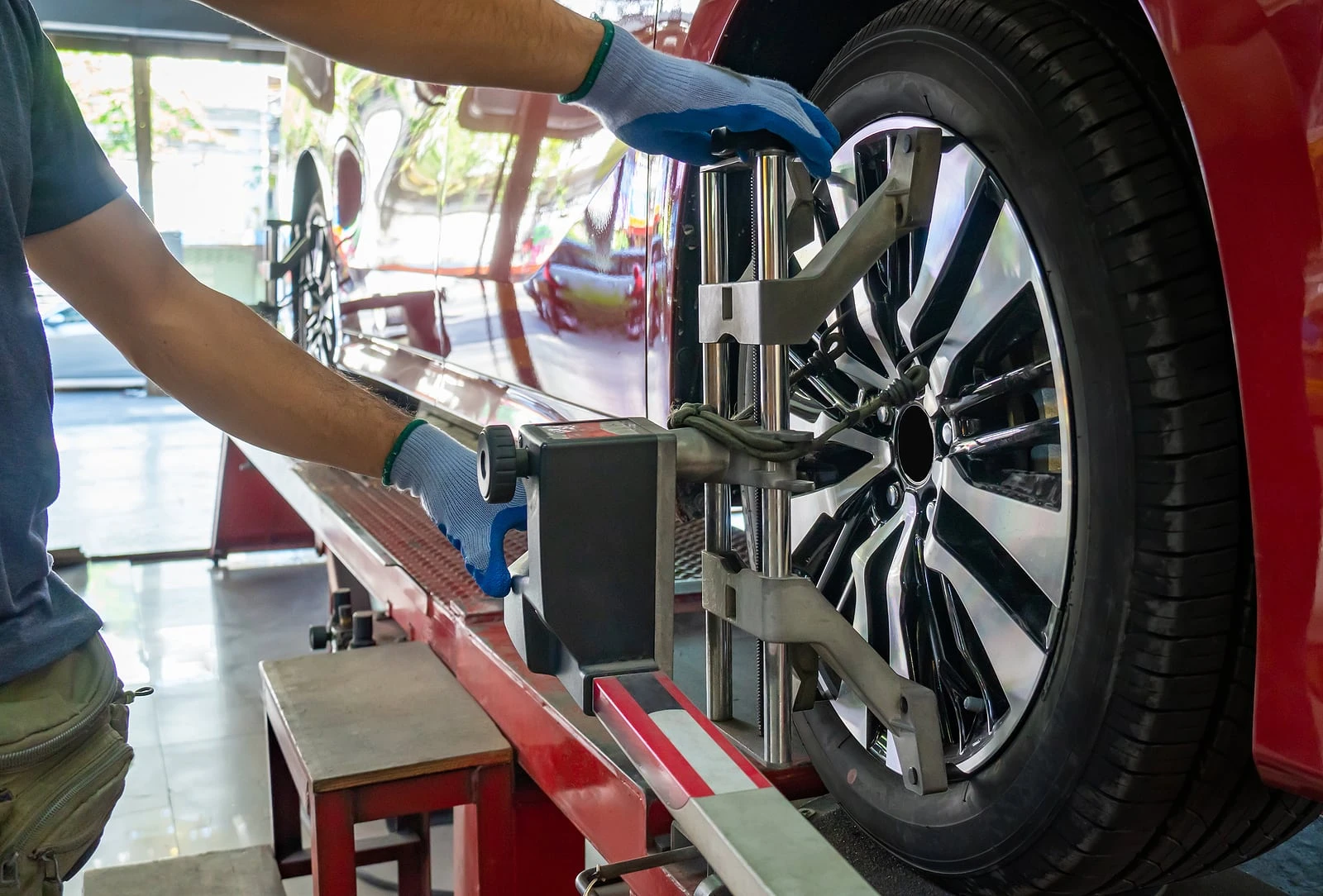Proper wheel adjustment is essential for your vehicle's performance and safety. If they are not arranged correctly, it can cause problems impacting your overall driving experience. This blog post will explore the common causes of bad alignment and joint issues and how to prevent them.

Potholes and Road Hazards:
One of the primary causes of bad alteration is hitting potholes, road hazards, or curbs. The impact from these obstacles can knock your tires out of place, leading to uneven tire wear and poor handling. It is essential to be cautious while driving and avoid hitting potholes and curbs whenever possible. You can also learn more about wheel alignment for more knowledge.
Worn Suspension Components:
Over time, your vehicle's suspension components can wear out, causing your wheels to become misaligned. Components such as ball joints, control arms, and bushings can become worn or damaged, leading to readjustment issues. Performing routine maintenance and inspections can be beneficial in detecting and replacing worn suspension parts before causing any positioning issues.
Accidents and Collisions:
Accidents and collisions can have a significant impact on your vehicle's calibration. Even a minor collision can knock your tires out of position, affecting the handling and safety of your vehicle. After an accident, inspecting your vehicle with a qualified mechanic is crucial to restore order.
Improper Tire Inflation:
Regularly checking and maintaining the appropriate tire pressure can prevent uneven wear and balancing issues. By taking this precaution, you can avoid premature tire wear and ensure safety while driving. Addressing unbalanced issues promptly can also extend the lifespan of your tires and keep you safe on the road.
Wear and Tear:
Over time, regular usage can cause poor tire positioning. As your vehicle ages, the suspension components can become worn, affecting the order. Regular maintenance, including inspections and replacing worn components, can help prevent adjustment problems caused by wear and tear.
We will explore the consequences of bad adjustment and how they can impact your vehicle.
Poor Handling and Stability:
Bad roller calibration can also affect the handling and stability of your vehicle. When your car tires are misaligned, it can cause your vehicle to pull to one side or the other. This can make it challenging to keep your vehicle on a straight path and can affect your ability to control the vehicle, especially at high speeds or in emergencies.
Decreased Fuel Efficiency:
Another consequence of lousy alteration is decreased fuel efficiency, it can cause increased rolling resistance, which means your engine must work harder to move the vehicle. This can decrease fuel efficiency and increase fuel consumption, costing you more money at the pump.
Increased Tire and Suspension Component Wear:
Damage alteration can also increase wear on your tires and suspension components. When the tires are not put in correctly, it can put additional stress on these components, causing them to wear out more quickly. This can result in costly repairs and replacements down the line.
Safety Concerns:
The most significant consequence of lousy positioning is the potential safety concerns it can pose. When your wheels are misaligned, it can affect your ability to control the vehicle, especially in emergencies. This can increase the risk of accidents and injuries for you, your passengers, and other road users.
We will also review essential maintenance tips to prevent unbalance and keep your vehicle in optimal condition.
Regular Tire Inspections:
Regularly inspecting your tires is essential for preventing lousy calibration. Look for signs of uneven wear, such as bald spots or excessive wear on one side of the tire. If you notice any irregularities, they may be a misaligned sign and need to be adjusted.
Routine Tire Rotations:
Another effective way to prevent awful positioning is to schedule regular tire rotations. Rotating your tires helps ensure they wear evenly and can help identify alteration issues early on. Consult your vehicle's owner's manual or a trusted mechanic to determine how often you should rotate your tires.
Avoid Potholes and Rough Roads:
Potholes and rough roads can significantly impact your vehicle's balance. To prevent awful readjustment, avoid driving over potholes whenever possible. If you encounter a pothole or rough road, slow down and drive over it cautiously to minimize the impact on the tires.
Proper Tire Inflation:
Maintaining proper tire inflation is crucial for preventing lousy acclimation. Overinflated or underinflated tires can stress the suspension components, leading to misalignment. Regularly check your tire pressure and ensure it meets the manufacturer's recommended levels.
Professional Wheel Adjustment:
Finally, scheduling regular professional arrangements is essential for preventing tire wear. A professional calibration mechanic can accurately assess your vehicle's order and make necessary adjustments. Having your car aligned at least once a year or whenever you notice any signs of misalignment is recommended.
In conclusion, it is vital to prevent unwanted unbalance for your vehicle's optimal performance, safety, and longevity. You can minimize the risk of adjustment issues by following these maintenance tips: regularly inspect your tires, schedule routine tire rotations, avoid rough roads and potholes, maintain proper tire inflation, and schedule a professional alignment.
If your car has been damaged and is no longer safe to drive due to poor alignment, do not worry; you can still get money from it.
You might wonder, "Who would want to buy my car?" Look no further than Zeus - Cash For Junk Cars. Regardless of the condition, we will give you our best offer. If you are ready to get rid of your vehicle, contact us by call or text message at 832-516-3533 and get a free quote.
Preventing Bad Wheel Alignment
- July 23, 2023
